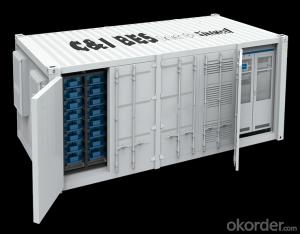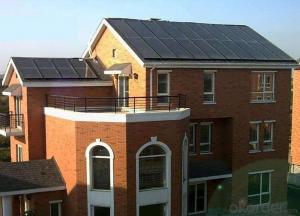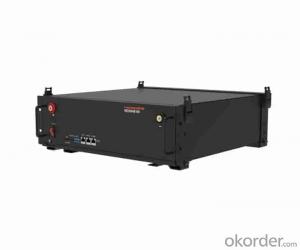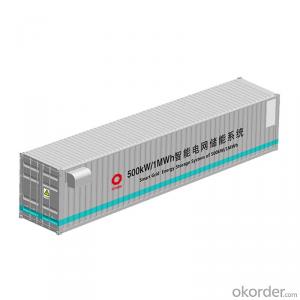4000w Solar Inverter
4000w Solar Inverter Related Searches
Best Solar Inverter For Home Power Inverter For Solar Panel Solar System Inverter For Home Solar Power Inverter For Home Best Solar Inverter For Rv Solar Power Inverter For House Inverter For 100w Solar Panel Solar Panel Inverter For Rv Inverter For 5kw Solar System Shade Cover For Solar InverterHot Searches
Inverter Size For Solar System Best China Solar Inverter Solar Inverter Supplier In Uae Solar Inverter In Dubai Solar Inverter In Saudi Arabia Solar Inverter In Uae Solar Inverter In Kerala Solar Inverter In Nepal Solar Inverter In Burpengary Solar Inverter In Caboolture Solar Inverter In Chennai Solar Inverter In Lebanon China 10kva Solar Inverter China Solar Inverter 1000kw China Solar Inverter 3kw China 5000w Solar Inverter China 850va Solar Inverter China Infini Solar Inverter Solar Inverter China Inverter Solar System Price4000w Solar Inverter Supplier & Manufacturer from China
Okorder.com is a professional 4000w Solar Inverter supplier & manufacturer, offers integrated one-stop services including real-time quoting and online cargo tracking. We are funded by CNBM Group, a Fortune 500 enterprise and the largest 4000w Solar Inverter firm in China.Hot Products
FAQ
- Yes, there are maintenance costs associated with solar energy systems. While solar panels require very little maintenance compared to other energy systems, there are still some costs involved. These costs include regular cleaning of the panels to ensure maximum efficiency, inspection and repair of any damaged or malfunctioning components, and periodic replacement of parts that may wear out over time. Additionally, solar energy systems may require monitoring and maintenance of the batteries or inverters that store and convert the energy. It is also recommended to have a professional conduct an annual inspection to ensure the system is functioning properly. While these maintenance costs are typically low compared to the savings generated by solar energy, it is important to factor them into the overall cost analysis when considering the installation of a solar energy system.
- Yes, solar energy systems can definitely be used to power recreational facilities like gyms or spas. Solar panels can be installed on the roofs or grounds of these facilities to convert sunlight into electricity. This renewable energy source can provide a significant portion, if not all, of the power needed to operate the facilities. Additionally, solar energy systems can help reduce the carbon footprint of these establishments and contribute to a more sustainable and environmentally friendly operation.
- Solar energy systems have a positive impact on the health and well-being of communities in several ways. Firstly, they significantly reduce air pollution by replacing fossil fuel-based energy sources, leading to cleaner air and a decrease in respiratory diseases. Secondly, solar energy systems eliminate the need for hazardous materials like coal and oil, reducing the risks associated with mining and transportation accidents. Moreover, the increased availability of affordable and sustainable energy promotes economic development, improves access to healthcare, and enhances overall quality of life. Additionally, solar power generation creates job opportunities, contributing to the socio-economic well-being of communities. In summary, solar energy systems have a profound positive effect on community health, environmental sustainability, and overall well-being.
- Net metering is a billing arrangement that allows solar panel owners to earn credits for excess electricity they generate and feed back into the grid. Essentially, it works by measuring the difference between the electricity a consumer consumes from the grid and the surplus electricity they produce. This surplus is then credited to their account, offsetting their future energy consumption and allowing them to save money on their utility bills.
- One disadvantage of using solar energy is its intermittent nature, as it is dependent on sunlight availability. Factors such as cloudy weather or nighttime can limit its energy generation. Additionally, solar panels and the necessary equipment can be expensive to install, which may deter some individuals or businesses from adopting solar energy.
- Solar energy systems are indeed viable in areas prone to hurricanes. Despite the potential damage hurricanes can inflict on these systems, there are strategies to mitigate the associated risks. To begin with, it is possible to design and install solar energy systems in hurricane-prone regions in a manner that can withstand strong winds. This involves employing sturdier mounting systems, reinforced frames, and secure anchoring techniques. Additionally, optimizing the orientation and tilt angle of the solar panels can minimize wind resistance. Furthermore, regular maintenance and inspections are crucial for identifying any potential issues or damages before a hurricane strikes. This proactive approach allows for timely repairs or replacements, ensuring the system remains operational and secure during severe weather events. In the event of a hurricane, it is important to have emergency protocols in place to safeguard the solar panels and other components. Temporary removal of the panels and indoor storage or utilization of protective covers to shield them from debris are some viable options. Moreover, the use of microinverters or power optimizers can enhance the resilience of solar energy systems in hurricane-prone areas. These advanced technologies enable each solar panel to function independently, minimizing the impact of damage to a single panel and preventing the entire system from shutting down. Lastly, solar energy systems can contribute to the resilience of communities during and after hurricanes. By incorporating proper battery storage, these systems can provide backup power during power outages, ensuring the continuity of essential services and meeting critical electricity needs like lighting, refrigeration, and medical equipment. In conclusion, although precautions must be taken to ensure the durability and functionality of solar energy systems in hurricane-prone areas, they can effectively harness clean and renewable energy even in the face of frequent hurricanes.
- Solar energy systems can have both positive and negative impacts on the stability of the electrical grid. On one hand, solar energy systems help diversify the energy mix by providing a clean and renewable source of electricity. This reduces the reliance on fossil fuels and decreases greenhouse gas emissions, leading to a more sustainable and environmentally friendly grid. Additionally, solar energy systems can contribute to grid stability by reducing the peak demand for electricity during daylight hours. During sunny periods, solar panels produce electricity at their maximum capacity, which can offset the need for fossil fuel-based power plants to operate at their peak levels. This can help alleviate strain on the grid during times of high demand and prevent potential power outages or blackouts. However, solar energy systems also pose challenges to the stability of the electrical grid. One of the main challenges is intermittency. Solar power generation is dependent on weather conditions, so it fluctuates throughout the day. This intermittency can create imbalances between electricity supply and demand, which can destabilize the grid. To mitigate this issue, grid operators must carefully manage the integration of solar energy systems into the grid by employing advanced forecasting and grid management technologies. Furthermore, the high penetration of solar energy systems in certain regions can lead to over-generation during peak solar production hours. This excess electricity may not be efficiently utilized or stored, potentially causing voltage fluctuations and grid instability. Grid operators need to invest in energy storage technologies such as batteries to store surplus solar power and release it when needed, ensuring grid stability. In conclusion, solar energy systems have a significant impact on the stability of the electrical grid. While they contribute to a cleaner and more sustainable energy mix, their intermittent nature and potential for over-generation require careful grid management and the integration of energy storage technologies. With proper planning and investment, solar energy systems can play a crucial role in achieving a stable and resilient electrical grid.
- The promotion of social equity is one of the crucial roles played by solar energy systems. These systems create equal opportunities for individuals, regardless of their socioeconomic status. Solar energy offers several benefits, with one of the key advantages being its ability to lower energy costs for households and communities. By installing solar panels, individuals can generate their own clean and renewable energy, reducing their dependence on expensive fossil fuels and traditional energy sources. The reduction in energy costs is especially significant for low-income households, who often spend a higher proportion of their income on energy bills. Solar energy systems provide them with an opportunity to decrease their energy expenses, freeing up resources that can be allocated towards other essential needs like education, healthcare, or food. By alleviating the financial burden of energy costs, solar energy promotes social equity by helping to alleviate poverty and enhancing the overall quality of life for disadvantaged communities. Furthermore, solar energy systems contribute to the creation of green jobs and economic opportunities. The installation, maintenance, and operation of solar panels require a skilled workforce, offering employment opportunities for individuals in local communities. This can particularly benefit marginalized populations who may face obstacles to employment due to limited access to education or discrimination. By providing job opportunities in the renewable energy sector, solar energy systems contribute to reducing income inequality and promoting social mobility. Solar energy also has a positive impact on the environment and public health, which is crucial for promoting social equity. Traditional energy sources, like coal or natural gas, contribute to air pollution and climate change, disproportionately affecting low-income communities and communities of color. These communities often reside near power plants or industrial areas, resulting in higher rates of respiratory diseases and other health issues. By transitioning to solar energy systems, these communities can benefit from cleaner air and reduced pollution, leading to improved public health outcomes and a more equitable distribution of environmental benefits. Solar energy promotes social equity by addressing environmental injustices and ensuring that all individuals have equal access to clean and healthy environments. In conclusion, solar energy systems play a vital role in promoting social equity by reducing energy costs, creating job opportunities, improving public health, and addressing environmental injustices. By providing equal access to clean and affordable energy, solar power helps level the playing field and ensures that all individuals, regardless of their socioeconomic status, can enjoy the advantages of renewable energy.















































